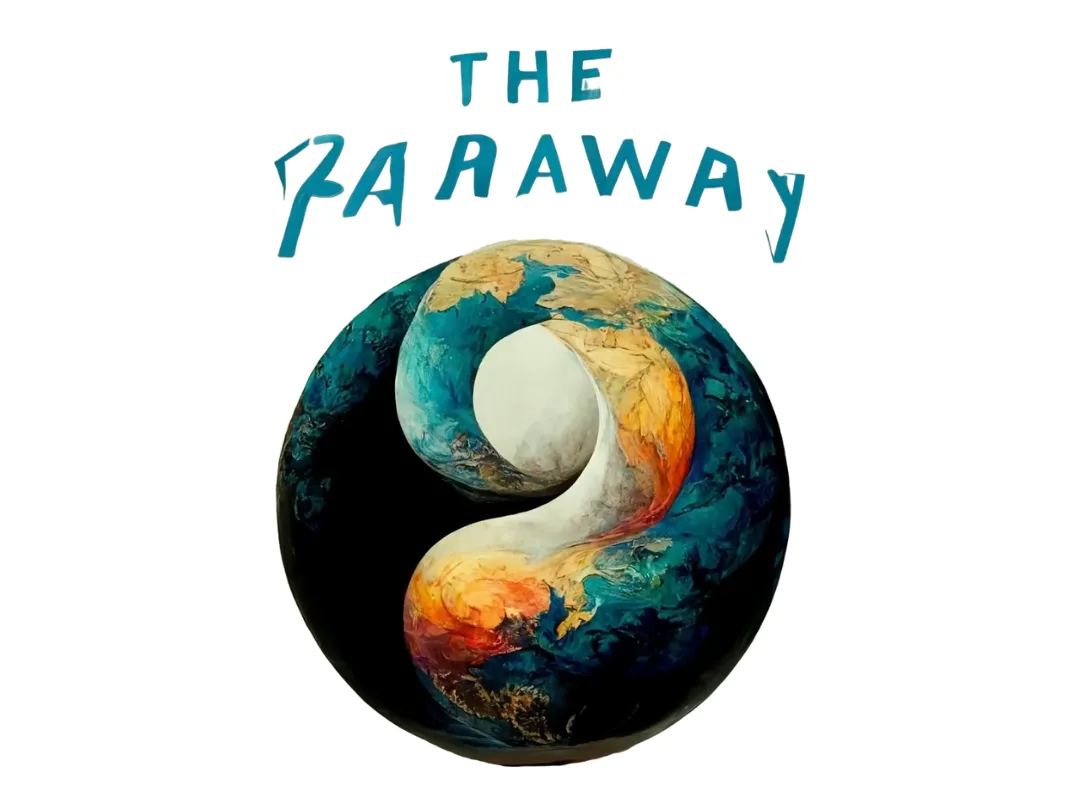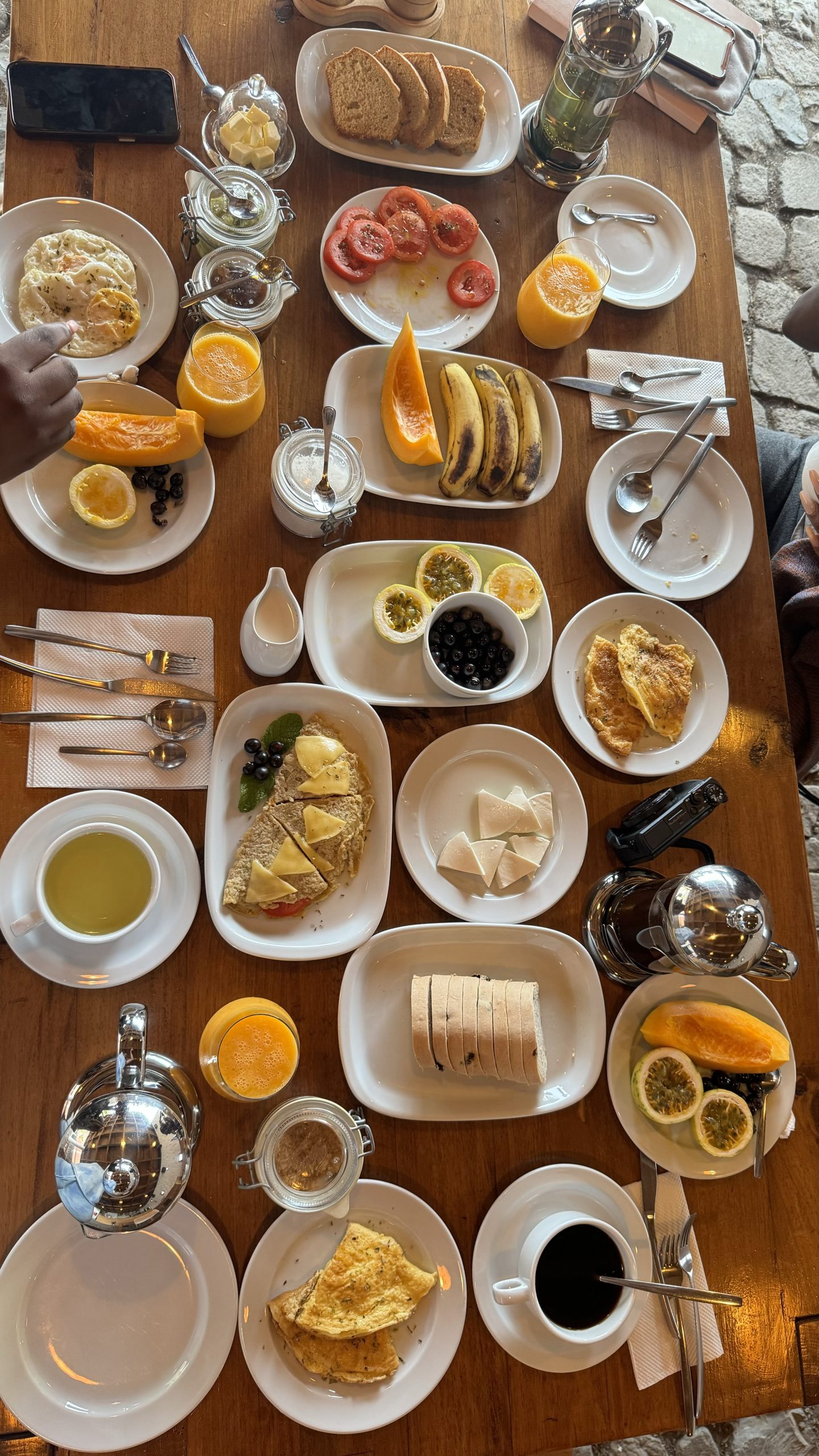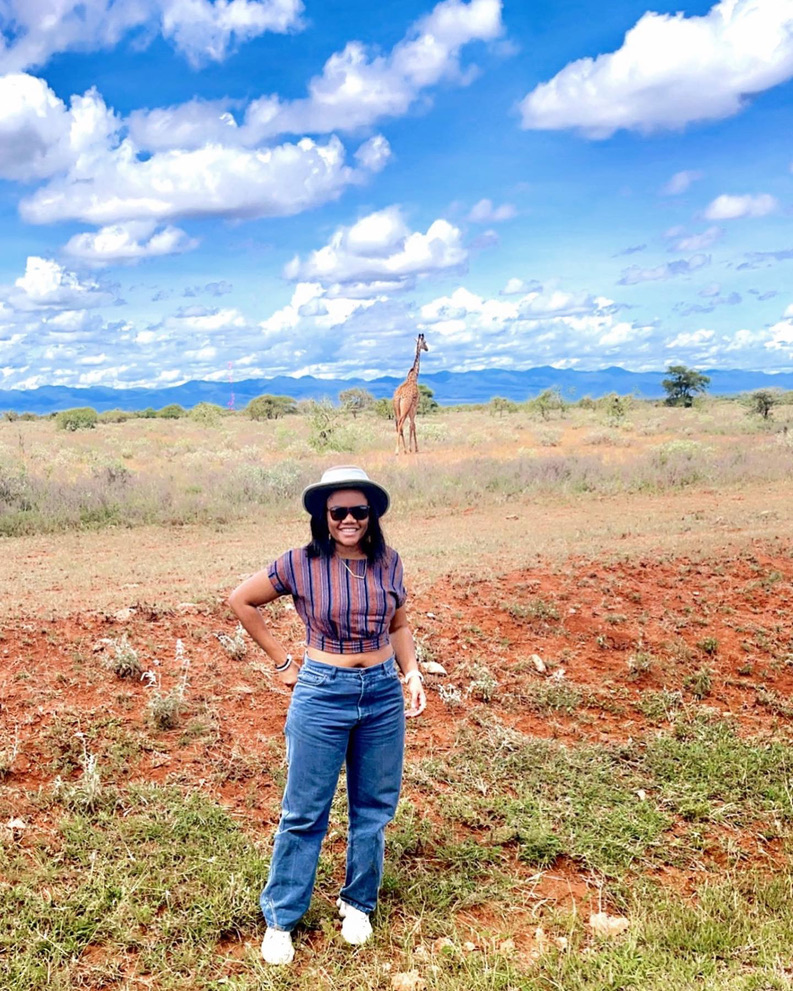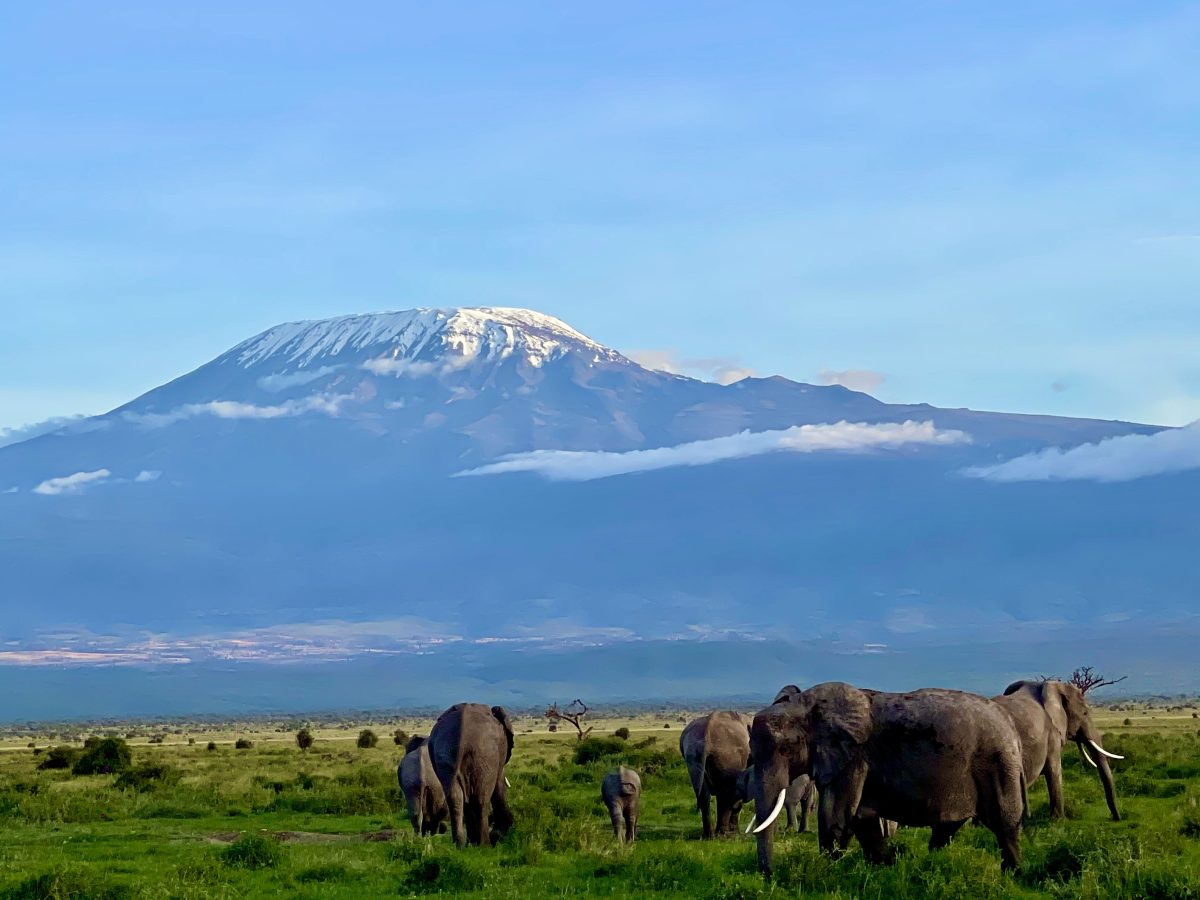At Mami Wata Ecolodge, nestled on the rugged coastline of Cape Verde, the connection between food, place, and spirit becomes an unspoken language. There’s something ineffable about how food can speak to the soul, especially when crafted with hands that have cultivated both the ingredients and the land they come from.
The moment we stepped onto the grounds of Mami Wata Ecolodge, we were enveloped in an atmosphere that felt both intimate and expansive. We were greeted with an ice-cold glass of Bissap—our first taste in Cape Verde. This wasn’t the Bissap we knew from Senegal or Nigeria; it was lighter, more refined, with a delicate balance of mint and just a hint of sweetness. It was a simple gesture, yet it set the tone for the days ahead, where each meal would offer a new layer of discovery and a deeper connection to the island.

Day 1: Sunset on the Plate
It’s dinner time, and the sun casts a warm, golden light over the ocean filling the air with tranquility. Dinner was served as the sky transitioned from blush pink to deep indigo, a backdrop that made the meal feel almost like a ritual. The starter, eggplant stuffed with cheese and tomatoes, was a comforting introduction, each bite a melding of creamy and tangy flavors that promised more delights.



Then came the main course: a pork steak that was nothing short of a revelation. Tender and juicy, it pulled away from the bone effortlessly, each bite seasoned to perfection with a sauce that whispered rather than shouted. The yam purée was the perfect companion, smooth and earthy, grounding the dish in the rich soil of the island.


And then, the finale—cocoa ice cream. It was grainy and a little unrefined. it was my first taste of this but surely not my last. It wasn’t just dessert but a moment of pure indulgence; textured and rich, a fitting end to our first night. The evening wasn’t just about the food, though. It was about the setting sun, the sounds of the waves, and the gentle presence of Alex, our bartender. Alex with his easy smile and deep knowledge of the local spirits, made every drink feel like it was crafted just for you. As he poured, he spoke of the island’s history, the ingredients sourced from local farmers, and how each cocktail showcases Cape Verde’s unique blend of cultures.


Day 2: New Flavors and Old Memories
Day two began with a breakfast spread that was a feast for the senses. As I made my way to the dining area, I passed the gardener, an elderly man whose hands were weathered by years of working the land, carefully harvesting herbs for the day’s meals. This sight was a reminder of the deep connection between the food on our plates and the earth beneath our feet—a connection that would be reflected in every dish that followed. Alex, our ever-charming bartender-turned-guide, greeted us with a warm smile and began to take us through the colorful array of breakfast platters as they arrived. The first set featured cold cuts—fresh goat cheese that tasted like it had been made just hours before, paired with sun-ripened tomatoes bursting with flavor.



Then came the breads and cakes, each bite a testament to the skill of Analise, the resident chef whose passion for her craft was evident in every detail. A standout from the morning was hummus, served with warm, freshly baked bread. The hummus was so good that we couldn’t help but ask Analise for the recipe. She handed us the recipe with a smile that crinkled the corners of her eyes, speaking of generations of Cape Verdean women who have passed down their secrets from mother to daughter, each adding a little more love along the way. “Don’t forget to add love,” she said, her voice warm and sincere, “because that’s the most important ingredient.” It was a sentiment that echoed through every dish we tasted during our stay—a reminder that in Cape Verde, food is not just sustenance; it’s an expression of care, connection, and community.

Dinner greeted us with a surprise—a menu that challenged our palates and introduced us to new flavors. The starter was banana ceviche, a dish I’d never encountered before. It was a revelation: the sweetness of the banana was elevated by the freshly harvested herbs from the lodge’s gardens, creating a mixture of unexpected and delightful flavors. The fish in foil that followed was a testament to the simplicity of fresh ingredients—juicy, tender, and seasoned to perfection, with vegetables cooked just right, retaining their bite without losing their essence.





But the true highlight came at dessert—passion fruit mousse. As someone who adores passion fruit, I feel this dish is a personal gift. It was light, tangy, and perfectly sweetened, the kind of dessert that lingers in your mind long after the meal. Each spoonful was a burst of my favorite fruit, a vibrant close to another unforgettable day at Mami Wata Ecolodge.


Day 3: A Farewell Feast with Memories to Last
Our final day at Mami Wata Ecolodge began with a breakfast that felt like a comforting embrace. The colorful spread, with its fresh herbs and vibrant fruits, was a familiar delight. Each bite was a reminder of the lodge’s dedication to showcasing the island’s flavors.


Dinner that evening was a celebration of all we had come to cherish about this special place. It began with cassava served with that unforgettable hummus, a perfect reminder of Analise’s warm-hearted cooking. The main course stewed pork with couscous and sweet potato chips, was a dish that melted in your mouth, each bite an invitation to savor the moment with your eyes closed. Dessert was once again the cocoa ice cream—familiar and comforting, yet no less delightful. It was a sweet farewell, a final taste of the flavors that had made our stay unforgettable.




Reflecting on Cape Verde’s Culinary Soul
As I look back on our time at Mami Wata, I’m struck by how deeply the experience was intertwined with the essence of its people and land. The property’s dedication to sustainability is evident in every detail—from the vibrant herbs flourishing right on-site to their thoughtful support of local farmers. Each meal is more than just food; it’s a narrative of Cape Verde’s rich soil, the hands that nurture it, and the traditions that blend into a unique culinary tapestry. Mami Wata is not merely a destination; it’s a vibrant, living story of a place where every flavor and every moment are imbued with meaning.
Mami Wata isn’t just a place to stay; it’s a place to truly experience—to taste, to feel, and to remember long after you’ve gone.











































































